CSC/ECE 517 Spring 2023 - NTNX-2. Support provisioning mySQL databases via NDB Kubernetes Operator: Difference between revisions
| Line 11: | Line 11: | ||
==Tasks Implemented== | ==Tasks Implemented== | ||
We | We set up our own Kubernetes cluster using Docker Desktop and cloned the ndb-operator repository to make changes to the code. | ||
The manifest file used to generate the provisioning request was set up: This includes the Nutanix Database Service server that is being used as well as parameters such as database instance name, database names, credential secret (which is applied using a different manifest file), size, timezone and type of database that needs to be provisioned. | The manifest file used to generate the provisioning request was set up: This includes the Nutanix Database Service server that is being used as well as parameters such as database instance name, database names, credential secret (which is applied using a different manifest file), size, timezone and type of database that needs to be provisioned. | ||
Revision as of 20:22, 7 April 2023
Introduction
Nutanix Database Service
Nutanix Database Service is a unique hybrid cloud-based database solution that offers support for several popular database management systems including Microsoft SQL Server, Oracle Database, PostgreSQL, MongoDB, and MySQL. With Nutanix Database Service, you can manage hundreds to thousands of databases with ease. It simplifies tasks like provisioning new databases, automating routine administrative tasks such as backups and patches, and selecting the right operating systems, database versions, and extensions to meet your specific application and compliance requirements.
Nutanix Database Service Operator
The Nutanix Database Service (NDB) Operator is an innovative tool that automates and simplifies database administration, provisioning, and life-cycle management on Kubernetes. By utilizing the NDB Operator, developers can directly provision popular database management systems like PostgreSQL, MySQL, and MongoDB from their K8s cluster with ease. This results in significant time savings that could take days to weeks of effort if done manually. The NDB Operator is an open-source tool that can be accessed from your preferred Kubernetes platform, and also allows you to benefit from the full database life-cycle management that NDB provides.
Problem Statement
Our team's first task was to get familiar with the operator's codebase which was written in GoLang. We also had to understand basic cluster administration using Kubernetes and make ourselves familiar with the Go Operator SDK which is what is used to develop custom Kubernetes Operators. Our goal was to enhance the functionality of the Nutanix Database Service (NDB) Operator, which at the time could only support the provisioning of PostgreSQL databases. We had to extend the capabilities of the operator to include the provisioning and de-provisioning of MySQL databases. This required modifications to the existing operator to enable the provisioning of MySQL databases, as well as refactoring of the operator's code-base to support this added feature. We also had to make sure that the Operator's code was tested and that the provisioning and de-provisioning steps were tested end-to-end.
Tasks Implemented
We set up our own Kubernetes cluster using Docker Desktop and cloned the ndb-operator repository to make changes to the code.
The manifest file used to generate the provisioning request was set up: This includes the Nutanix Database Service server that is being used as well as parameters such as database instance name, database names, credential secret (which is applied using a different manifest file), size, timezone and type of database that needs to be provisioned.
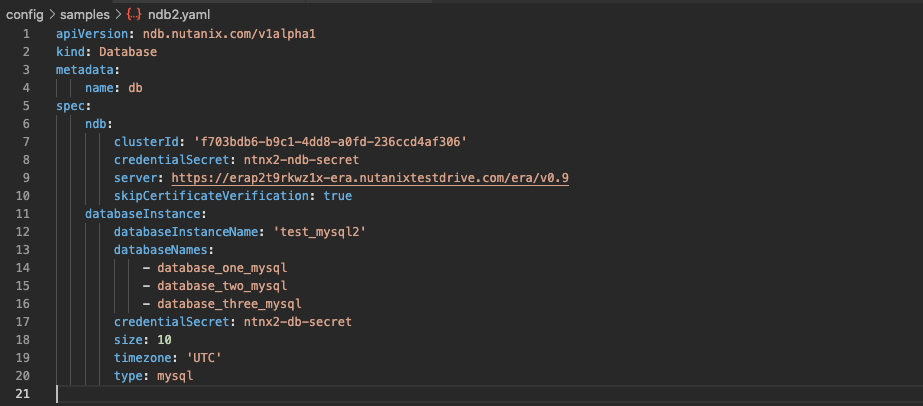
The GenerateProvisioningRequest takes the following arguments: a context, an instance of a struct called NDBClient, an instance of a struct called DatabaseSpec, and a map containing strings as keys and interface{} types as values. The function returns a pointer to an instance of a struct called DatabaseProvisionRequest and an error.
Within the function, a Time Machine Service Level Agreement (SLA) is fetched and as well as OOB profiles from the remote database client. If the function fails to do either of these things, it logs the error and returns.
The function then joins the database instance names together into a single string, and performs type assertions on the password and SSH public key contained within the map argument. If either of these assertions fail (i.e not of type string or empty) errors are thrown.
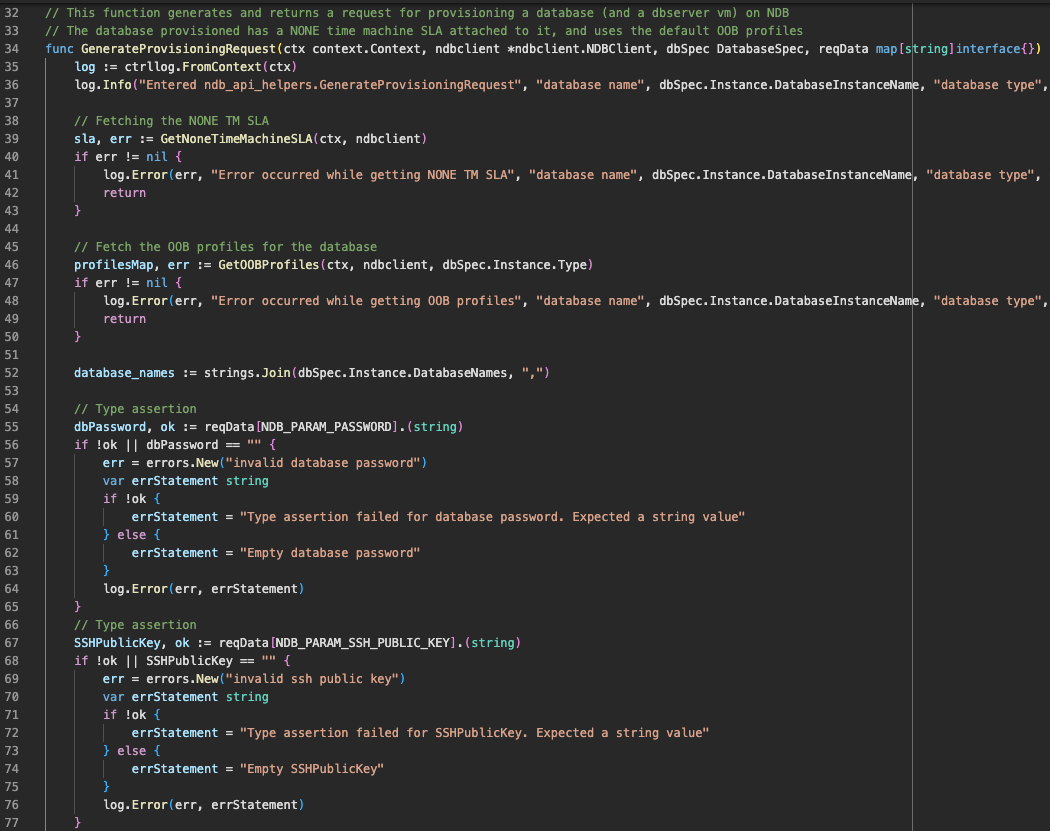
The GetOOBProfiles takes three parameters as input: ctx, ndbclient and dbType and returns a map of profiles and an error. Inside the function, the map of profiles is initialized and GetAllProfiles function is called.
The function then filters out the generic and specific database engine type profiles using the "util.Filter" function. It then again filters these profiles based on the profile type such as COMPUTE, STORAGE, SOFTWARE, NETWORK, and DATABASE_PARAMETER using the same "util.Filter" function.
The function checks if all the required profiles are present or not, and if any of the required profiles is not present, it returns an error. If all the profiles are present, it stores them in the map and returns the map of profiles.
So, basically, this function gets OOB profiles based on the input database engine type and populates a map of profiles.
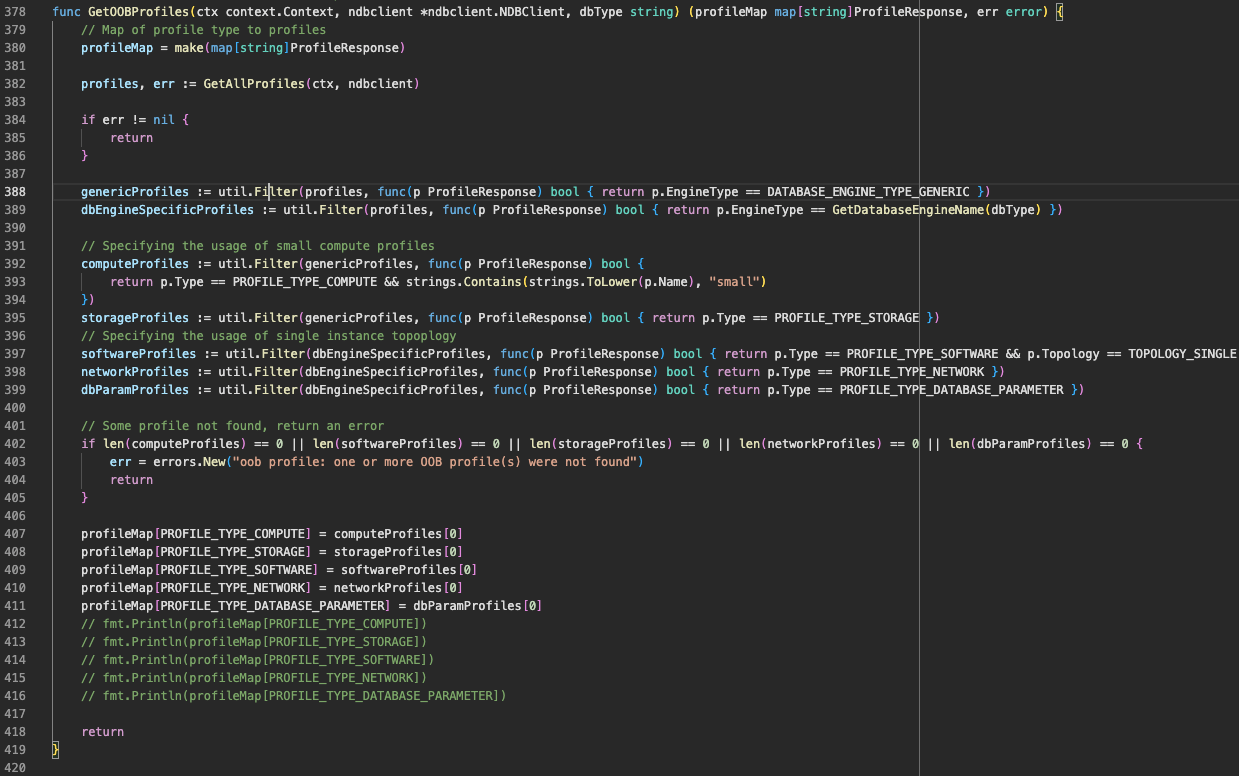
The GetDabaseEngineName and the GetDatabasePortByType functions also returns the database type depending on the definition in the manifest file.
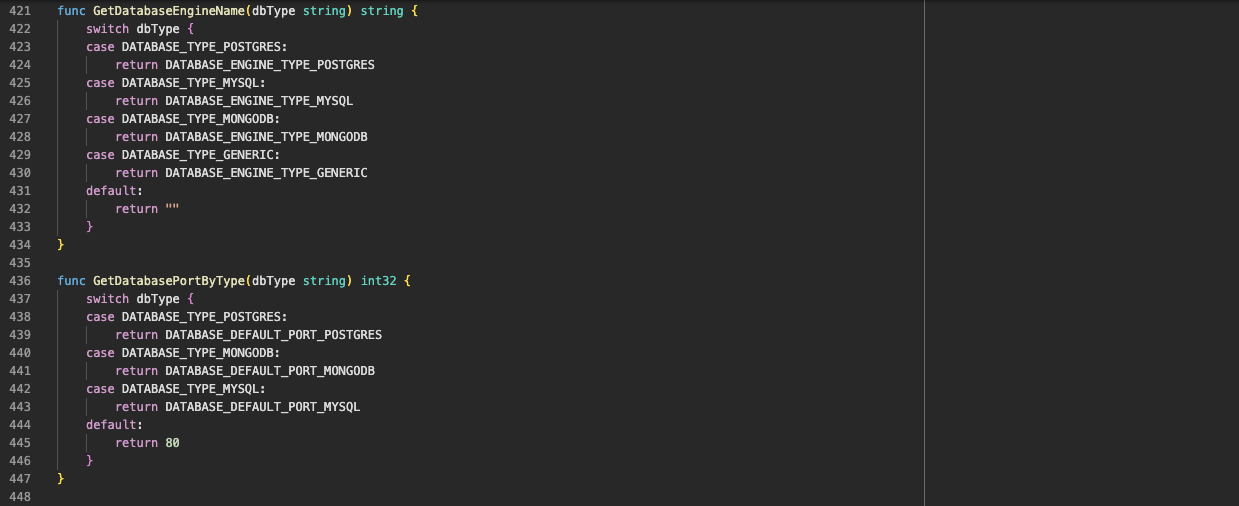
The ProvisionDatabase function sends a POST request to the "databases/provision" endpoint of the Network Database service using the ndbClient's Post method. It checks and logs any errors during the POST request. If the POST request is successful and returns a status code of 200 (http.StatusOK), the HTTP response body is read and unmarshaled into the task object.
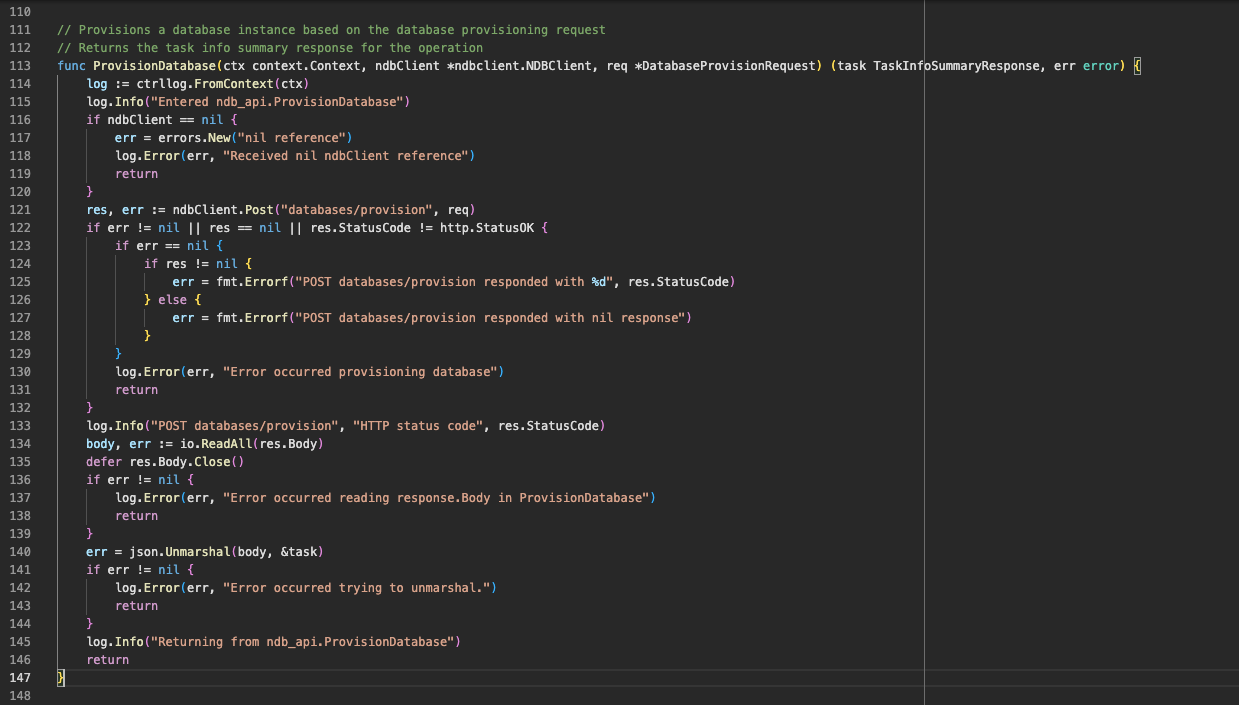
To provision the MySQL database the ActionArguments as well as the port had to be changed.
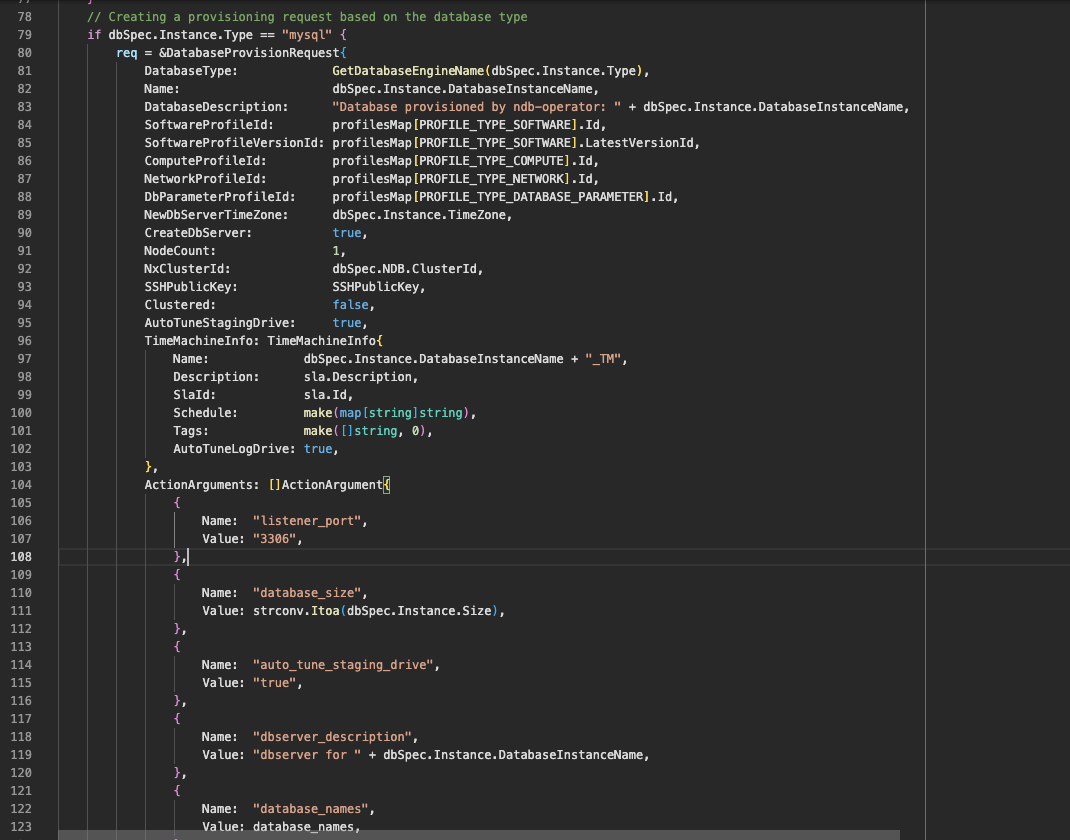
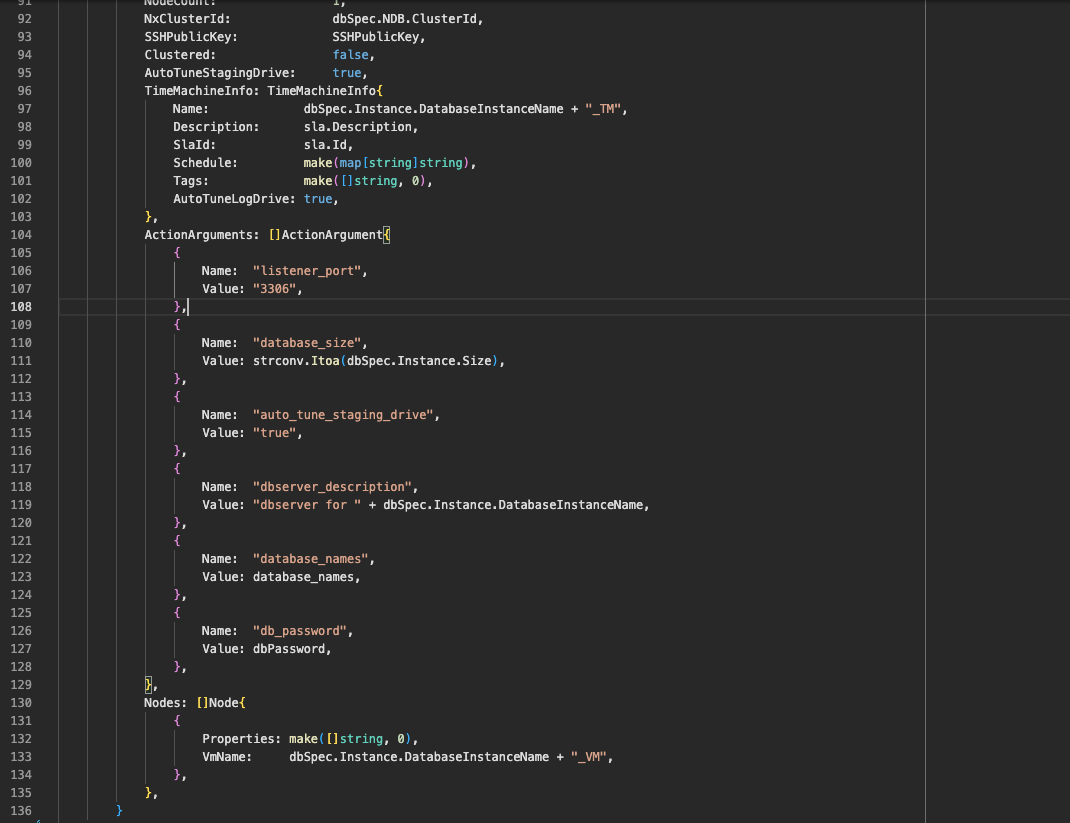
Design Patterns
One design pattern that can be used to improve this code is the Factory design pattern. The Factory design pattern is used to define an interface for creating an object, but let sub classes decide which class to instantiate. Based on the instance type, the database provision request can be generated and a factory interface can be defined for this. Apart from this the DRY principle has also been followed by making use of profile maps and functions to get database by name in order to have a single method to provision databases and not have different control statements to generate provisioning requests for different database instance types.
Testing Plan
The system was tested by running the operator on a local Kubernetes cluster and then making provisioning requests to the Nutanix Database Service test drive cluster that was assigned.
Step 1: First, the manifest for provisioning a mysql database was configured.

Step 2: The NDB operator was then run on a local cluster to make sure that the provisioning request was being completed.
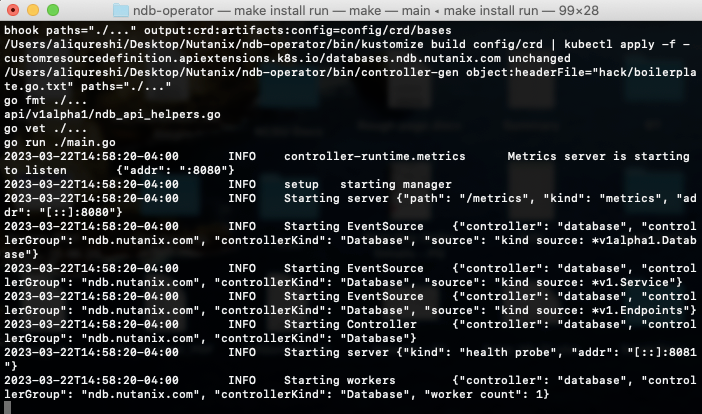
Step 3 : The secrets were configured
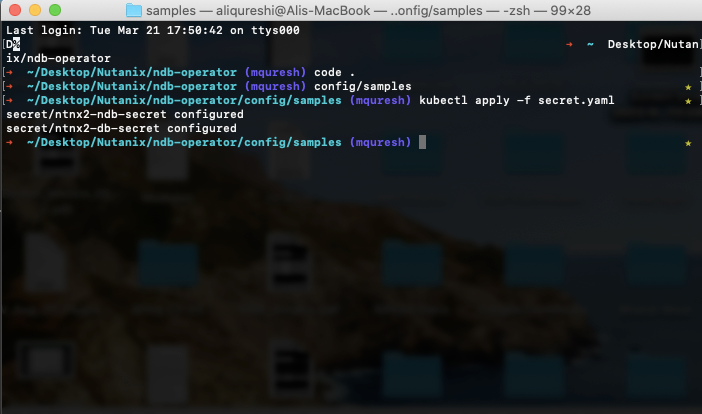
Step 4: The configuration for the database was applied and a successful response is received by the operator.
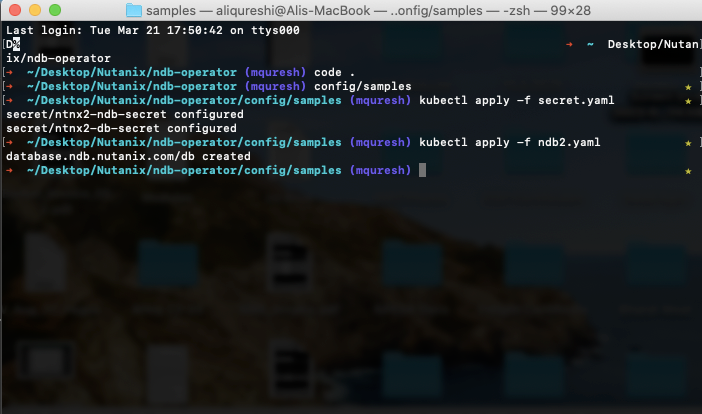
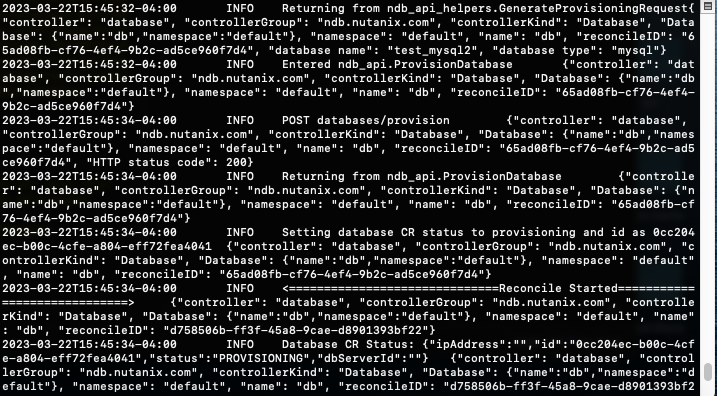
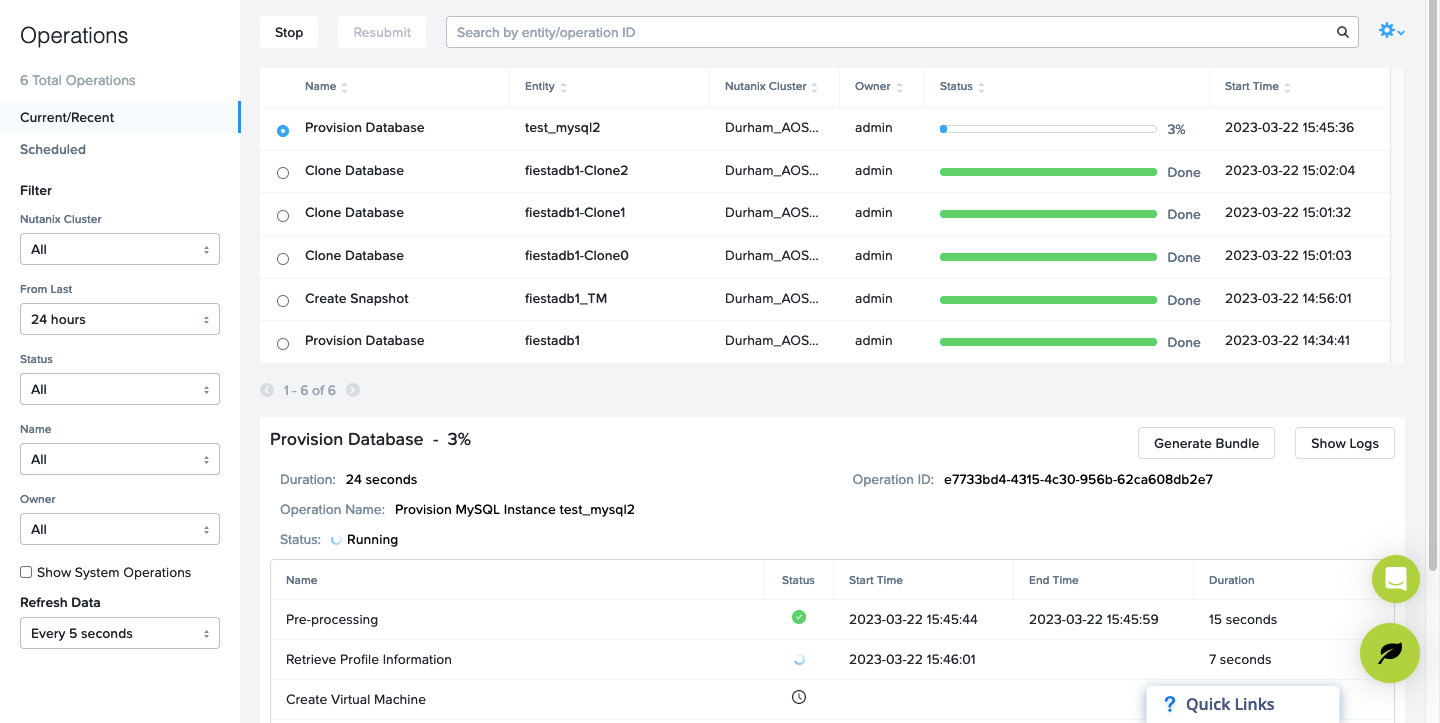
Future Work
We can currently use the NDB Kubernetes Operator to provision mySQL databases. Deprovisioning the provisioned database would be the most important task for future work. This is essential for freeing up resources and lowering costs. Second, refactoring the code is required to retain the codebase's clean, maintainable, and scalable nature. Finally, it is critical to collaborate and integrate the work of each team to ensure that the project is aligned with the overall company goals and objectives.
References
- NDB Operator Document - https://docs.google.com/document/d/1-VykKyIeky3n4JciIIrNgirk-Cn4pDT1behc9Yl8Nxk/
- NDB Operator Github Repository - https://github.com/nutanix-cloud-native/ndboperator
- Go Documentation - https://go.dev/doc/
- Go Operator SDK Document - https://sdk.operatorframework.io/docs/buildingoperators/golang/tutorial/
- Overview of Kubernetes - https://kubernetes.io/docs/concepts/overview/
Github
Repo(Public): https://github.com/qureshi-ali/ndb-operator Pull Request: https://github.com/nutanix-cloud-native/ndb-operator/pulls
Mentors
- Prof. Edward F. Gehringer
- Krunal Jhaveri
- Manav Rajvanshi
- Krishna Saurabh Vankadaru
Contributors
- Muhammad Ali Qureshi(mquresh)
- Prasad Vithal Kamath (pkamath3)
- Boscosylvester John Chittilapilly (bchitti)